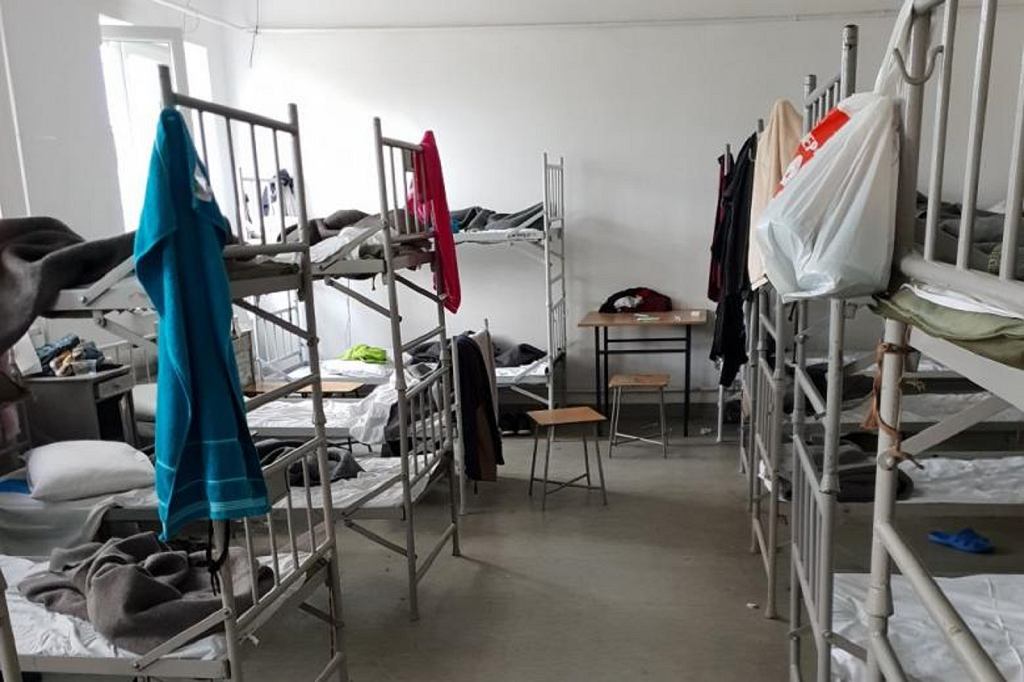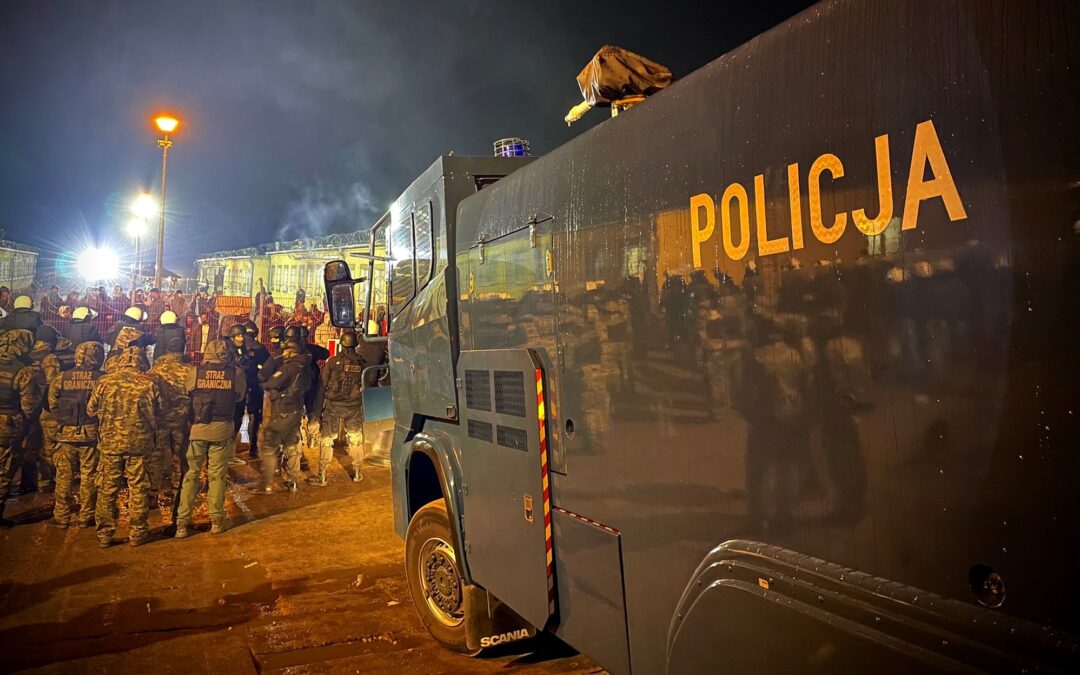A group of around 100 men being held at a facility for detained border crossers rioted yesterday, demanding to be released. Poland’s border guard announced late last night that the situation had been brought under control, but that significant damage was done to the facility.
The Polish Press Agency (PAP) reports that the group came out of the building they were being held in, shouting “freedom” and that they wanted to reach Germany. They tried to break through a fence and also smashed windows at the centre and started fires, reports TVN24.
Around half the 600 people being held at the facility, which is located at a military training ground in the village of Wędrzyn, are Iraqis. The centre was in the process of preparing a flight to Iraq to repatriate a few dozen men who had not been permitted to remain in Poland, reports local newspaper Gazeta Lubuska.
Sytuacja opanowana.
Dziś cudzoziemcy umieszczeni w strzeżonymi ośrodku w Wędrzynie próbowali sforsować ogrodzenie. Osoby były agresywne.
W ośrodku znajduje się 600 mężczyzn- ponad połowa to obywatele Iraku.#funkcjonariuszeSG współdziałali z @PolskaPolicja 🤝#NaStraży pic.twitter.com/NXbopyuRIq— Straż Graniczna (@Straz_Graniczna) November 25, 2021
Poland has since the summer been experiencing an unprecedented wave of attempted crossings by tens of thousands of people – mostly from the Middle East – over its border with Belarus. Among those who have entered Poland, thousands have passed on to western Europe, but others have been detained by the Polish authorities.
This has put a significant strain on the “centres for foreigners” run by the border guard. Last month, Poland’s commissioner for human rights published a report on the facility in Wędrzyn, which was set up in August this year, warning that it was “overcrowded”, with migrants being held in conditions that “resemble prison”.
After yesterday’s protest broke out, around 500 police officers were called in to support the border guard. As well as significant damage to the facility, one border guard was injured after being hit with a stool, said deputy interior minister Maciej Wąsik, quoted by Rzeczpospolita.
“A group of over 100 migrants began to demolish the buildings in which they live, break windows, tear down bars, destroy furniture,” said Wąsik. They were “demanding either freedom, or better conditions, or transit to Germany or deportation to Iraq”.

An image from earlier this year inside the holding centre at Wędrzyn (source: RPO)
Wąsik said that those involved in the riot were men aged between 20 and 30, most of whom had entered Poland without identifying documents. “These are people whose phones revealed a lot of disturbing information about, for example, connections with terrorism or sexual crimes,” he added.
In September, the interior minister published content taken from border crossers’ devices that he said showed evidence of terrorist sympathies and sexual crimes. But a former head of Poland’s foreign intelligence agency cast doubt on the material.
Last week, the border guard revealed that 1,854 people were being held at its detention centres. It noted that over 40% of them had not applied for asylum, and that hundreds were being repatriated to their countries of origin.
Between the start of July and the end of October, almost 4,500 applications from foreigners for international protection were received by the border guard – an unprecedented number. The largest group were citizens of Afghanistan (most of them evacuated from Kabul by Poland), followed by Belarusians and Iraqis.
Since 26 October, new legislation has permitted the border guard to issue decisions at the border for those who have crossed illegally to be immediately returned to Belarus.
Some critics have argued that this is a violation of international law and an inhumane response to the crisis. But Poland has received support for its approach from the European Union and a number of member states, including Germany.
Main image credit: Lubuska_Policja/Twitter

Daniel Tilles is editor-in-chief of Notes from Poland. He has written on Polish affairs for a wide range of publications, including Foreign Policy, POLITICO Europe, EUobserver and Dziennik Gazeta Prawna.




















